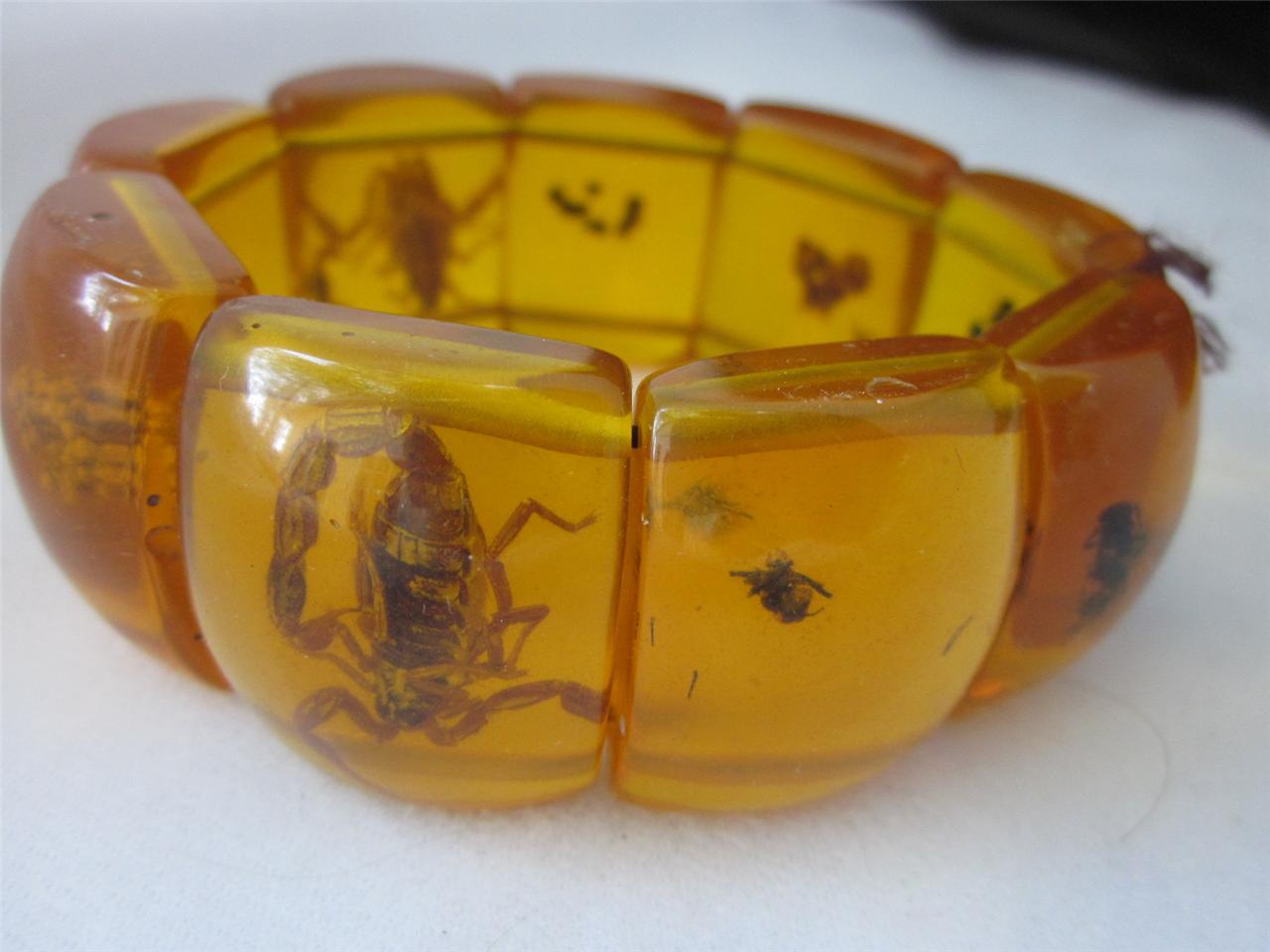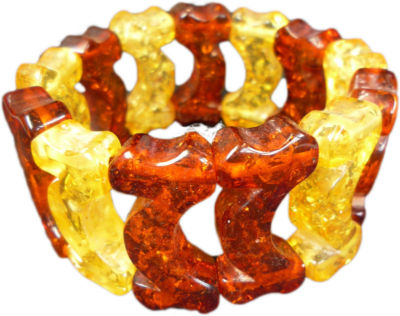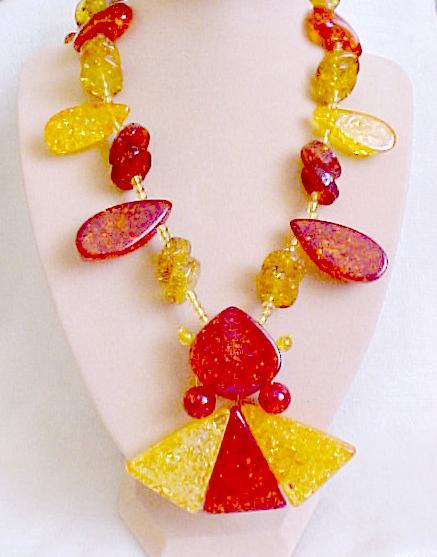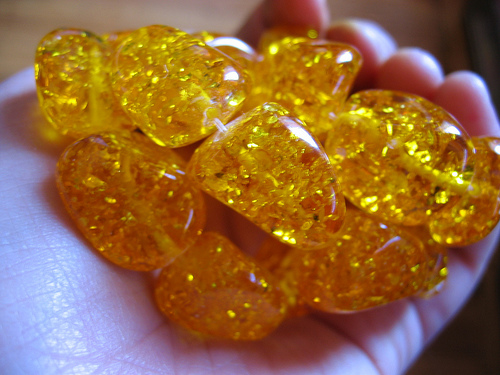| Main » Articles » About Baltic Amber |
How to recognize real Baltic amber?
As with other imitation gems labeled "manmade” or "created”, scientists found ways in the 19th century to synthesize precious natural materials into copies of varying inferior quality. Baltic amber was one of those precious materials that was replicated with worthless materials. Currently, the marketplace is flooded with fake amber especially inclusions. Unless you r  eally know how to determine real amber from
fake, it is easy to be deceived. The fake products go for a high price
at times and yet they are not only artificial, they do not have the
healing powers of natural Baltic Amber.
In this article, we will describe the most prevalent fake amber types.
There are a number of complex methods to determine fake from natural
amber. We recommend, first and foremost, that you purchase your amber
from the most reliable sources. eally know how to determine real amber from
fake, it is easy to be deceived. The fake products go for a high price
at times and yet they are not only artificial, they do not have the
healing powers of natural Baltic Amber.
In this article, we will describe the most prevalent fake amber types.
There are a number of complex methods to determine fake from natural
amber. We recommend, first and foremost, that you purchase your amber
from the most reliable sources.Copal is sold as Baltic amber, but in fact this is very young tree resins( 1000- 1million years old). Natural inclusions are possible in Copal, but usually they are falsified. Insects are inserted in them that are too big and too good-looking. Copal melts at rather a low temperature (lower than 150 C ), and tends to melts rather than burn. After heating it diffuses the "sweet" smell of burning resins. Glass  It is easy to distinguish glass from amber: it is more solid; it cannot be scratched by metal. Glass is cold and fireproof. It is easy to distinguish glass from amber: it is more solid; it cannot be scratched by metal. Glass is cold and fireproof.Fenolic resins Frequently, this material is found in artificial amber beads. These amber beads have especially exact shape (oval, faceted), the color is very similar to real amber (dark red, cloudy yellow, limpid). After heating it does not diffuse the smell of pine-tree resins, which is characteristic for Baltic amber. Celluloid  Celluloid (cellulose nitrate) is
usually yellow and cloudy. Optically it is difficult to distinguish it
from amber. Celluloid is more solid and not so combustible. After
heating it diffuses the smell of burnt plastic. Celluloid (cellulose nitrate) is
usually yellow and cloudy. Optically it is difficult to distinguish it
from amber. Celluloid is more solid and not so combustible. After
heating it diffuses the smell of burnt plastic.Casein This is a plastic made from milk. The beads have cloudy, turbid yellow color. It is a little bit heavier than amber. After heating it diffuses the smell of burnt plastic. Modern plastic Modern plastic (polyester, polystyrene) are used to produce artificial amber and inclusions. Optically this substitute can hardly be distinguished because with it authentic amber colors and limpidity can be obtained. Like in Copal, falsified inclusions are too big (more than 10 mm) and clearly seen, inserted in the very center of plastic. After heating it diffuses the smell of burnt plastic. TESTS TO ASCERTAIN REAL AMBER "Smell" test Smell tests are the most effective because natural amber has a specific smell, which is difficult to obtain when producing falsifications. After heating real Baltic amber diffuses the specific delicate fragrance of pine-tree resins. Falsifications using Copal diffuse the smell of "sweet" resins when heated and those using other materials diffuse the smell of burnt plastic. "Rubbing" tests (The best way is to rub into the palm of the hand) It is possible to heat real amber by rubbing until it releases the smell of pine- tree resins. This needs a very strong hand, as it is rather difficult to heat amber (especially when polished) to the necessary temperature, and it could be difficult to make an experiment with amber set in jewelry, as trying to rub it into other materials the amber could get scratched. "Hot needle" tests- the most effective To stick a heated needle into an imperceptible place in the amber (a hole of a drilled bead, etc.). If you smell definite pine-tree resins it means it is real amber. Deficiency: the slight mark of burning remains-this is incorrectable. Amber is fragile - sticking with a hot needle you will notice some cracks, while a needle will pierce plastic without cracking it. IR-spectroscopy IR-spectroscopy is the most effective scientific method for identifying fossil resins. Baltic amber could be characterized by IR-spectrum segment called "Baltic amber shoulder". Heat treatment All natural amber contains microscopic bubbles.  When you apply heat to a single piece of
amber, these bubbles evaporate and the amber becomes transparent. The
greater the temperature, the darker the amber will become. This
technique can be used to discern if the precious amber contains any
inclusions. It is also used to add variety to the coloration of natural
amber. It does not, however, increase or decrease the value of real
amber or the healing ability of natural amber. When you apply heat to a single piece of
amber, these bubbles evaporate and the amber becomes transparent. The
greater the temperature, the darker the amber will become. This
technique can be used to discern if the precious amber contains any
inclusions. It is also used to add variety to the coloration of natural
amber. It does not, however, increase or decrease the value of real
amber or the healing ability of natural amber.Pressed amber When small remnants of amber are fused together using high pressure or major heat source, the result is called "pressed” amber. While pressed amber is cheap and relatively available, it will not perform the same way original, natural amber does. Because the original pieces of amber have been compressed, the singular power of each piece is compromised. It is inexpensive to buy but if you’re interested in the natural powers of original amber, you will not experience them with pressed product. | |
| Views: 4391 | Comments: 1 | Rating: 5.0/1 |
| Total comments: 1 | ||
| ||

